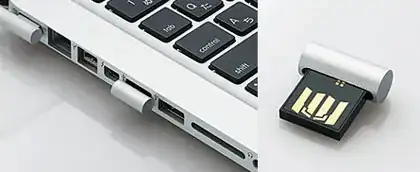That all depends on the system, the attacker, and the level of preparation they had. If they have unlimited preparation, they could do effectively anything that they could do with an unlimited access window. Even if they do not have in-depth knowledge of the specific system, it would not be difficult to very quickly inject malicious code that allows for subsequent remote access. They could:
Connect a PCMCIA or PCIe card and dump memory or inject code.
Splice a hardware keylogger in between the keyboard's PS/2 or USB cable.
Quickly download and execute malicious code, or modify existing code.
Access sensitive files and save them (e.g. with a camera or USB flash drive).
Physically destroy the computer (e.g. with a hammer or a power surge over USB).
Simply grab the system and pawn it off for a quick buck.
Time for a story. I once had a target who I would be in close proximity to for a brief period. My goal was to gain persistence on their laptop to exfiltrate sensitive documents. I knew I had only a few seconds every time they went out of sight, so I couldn't just grab their laptop and take my time. I obviously also could not steal it. Luckily, I came prepared. I had a programmable USB device that I plugged in. As soon as it was plugged in, it simulated keyboard input to open PowerShell and execute a few commands to download a payload I had set up earlier. The scenario went like this:
I waited until this person had left to get something for me in another room.
I leaned over on the table where the laptop was and surreptitiously plugged in the device.
I waited a few seconds to be safe, unplugged it, and tried to keep a straight face.
After they gave me what I asked for, I thanked them and left.
When I got home, I got on my computer and connected to their machine.
It was not difficult, did not take an extensive period of preparation, and was moderately stealthy. I could have made it even more stealthy if I used something that looked like a cell phone so I could claim I was just charging the device and didn't see any other USB ports around (which would be kind of weird and suspicious, but not as much as if it looked like a flash drive). The moral is that you can do a lot with just a few seconds of access, so you must never underestimate the risk.
So how do you protect against these threats? You need to develop a threat model. Figure out who your adversary is, what assets of yours they are after, and what their resources are. If you don't want your mother to see your porn when you're at her house, you probably don't need to worry about exploits abusing corrupt EDID in a VGA or HDMI cable. If you are holding extremely valuable company secrets in a highly competitive industry (robotics, epoxy, etc) and are going to a high-risk country like France or China, you absolutely need to worry about sophisticated attacks, because industrial espionage (aka the more illicit side of "corporate intelligence") is rampant. Stay with your computer at all times in adversarial situations. Lock it if you are going out of its line of sight, and bring it with you or physically secure it in a safe if you are going to be away for a longer period.

